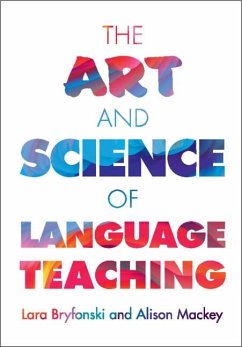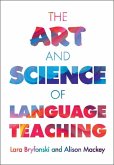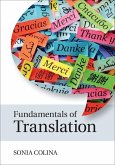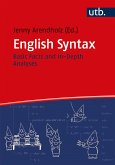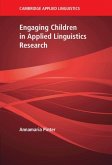23,95 €
23,95 €
inkl. MwSt.
Sofort per Download lieferbar

12 °P sammeln
23,95 €
Als Download kaufen

23,95 €
inkl. MwSt.
Sofort per Download lieferbar

12 °P sammeln
Jetzt verschenken
Alle Infos zum eBook verschenken
23,95 €
inkl. MwSt.
Sofort per Download lieferbar
Alle Infos zum eBook verschenken

12 °P sammeln
- Format: ePub
- Merkliste
- Auf die Merkliste
- Bewerten Bewerten
- Teilen
- Produkt teilen
- Produkterinnerung
- Produkterinnerung

Bitte loggen Sie sich zunächst in Ihr Kundenkonto ein oder registrieren Sie sich bei
bücher.de, um das eBook-Abo tolino select nutzen zu können.
Hier können Sie sich einloggen
Hier können Sie sich einloggen
Sie sind bereits eingeloggt. Klicken Sie auf 2. tolino select Abo, um fortzufahren.

Bitte loggen Sie sich zunächst in Ihr Kundenkonto ein oder registrieren Sie sich bei bücher.de, um das eBook-Abo tolino select nutzen zu können.
- Geräte: eReader
- mit Kopierschutz
- eBook Hilfe
- Größe: 32.49MB
- FamilySharing(5)
Andere Kunden interessierten sich auch für
![Art and Science of Language Teaching (eBook, PDF) Art and Science of Language Teaching (eBook, PDF)]() Lara BryfonskiArt and Science of Language Teaching (eBook, PDF)23,95 €
Lara BryfonskiArt and Science of Language Teaching (eBook, PDF)23,95 €![Fundamentals of Translation (eBook, ePUB) Fundamentals of Translation (eBook, ePUB)]() Sonia ColinaFundamentals of Translation (eBook, ePUB)17,95 €
Sonia ColinaFundamentals of Translation (eBook, ePUB)17,95 €![Anglo-American Cultural Studies (eBook, ePUB) Anglo-American Cultural Studies (eBook, ePUB)]() Jody SkinnerAnglo-American Cultural Studies (eBook, ePUB)37,99 €
Jody SkinnerAnglo-American Cultural Studies (eBook, ePUB)37,99 €![English Syntax (eBook, ePUB) English Syntax (eBook, ePUB)]() English Syntax (eBook, ePUB)28,99 €
English Syntax (eBook, ePUB)28,99 €![English Language (eBook, ePUB) English Language (eBook, ePUB)]() Charles BarberEnglish Language (eBook, ePUB)11,95 €
Charles BarberEnglish Language (eBook, ePUB)11,95 €![Plurilingual Education in a Monolingualised Nation (eBook, ePUB) Plurilingual Education in a Monolingualised Nation (eBook, ePUB)]() Daniel Roy PearcePlurilingual Education in a Monolingualised Nation (eBook, ePUB)18,95 €
Daniel Roy PearcePlurilingual Education in a Monolingualised Nation (eBook, ePUB)18,95 €![Engaging Children in Applied Linguistics Research (eBook, ePUB) Engaging Children in Applied Linguistics Research (eBook, ePUB)]() Annamaria PinterEngaging Children in Applied Linguistics Research (eBook, ePUB)27,95 €
Annamaria PinterEngaging Children in Applied Linguistics Research (eBook, ePUB)27,95 €-
-
-
Produktdetails
- Verlag: Cambridge University Press
- Erscheinungstermin: 21. Dezember 2023
- Englisch
- ISBN-13: 9781108943963
- Artikelnr.: 70912516
Dieser Download kann aus rechtlichen Gründen nur mit Rechnungsadresse in A, B, BG, CY, CZ, D, DK, EW, E, FIN, F, GR, HR, H, IRL, I, LT, L, LR, M, NL, PL, P, R, S, SLO, SK ausgeliefert werden.
- Herstellerkennzeichnung Die Herstellerinformationen sind derzeit nicht verfügbar.
Lara Bryfonski is an assistant professor of linguistics at Georgetown University. She has published and presented her research on a variety of topics in second language acquisition, including task-based language teaching, corrective feedback, materials development, language learning in study abroad, and methods for second language research. Her publications appear in journals such as the Annual Review of Applied Linguistics, Language Teaching Research, the Modern Language Journal, and Studies in Second Language Acquisition, as well as a variety of edited collections. She is a former ESL/EFL teacher and an experienced teacher trainer and has worked with NGOs in Latin America, public and private schools in the US, governmental and financial organizations, and universities to provide research-based training in language teaching.
Preface
Acknowledgments
Note on Terminology
Pre-Reading Self-Assessment
Part I. Teacher and Student Talk
1. How do I get my learners to start and stay talking in the second language?
2. How do I maximize input in the second language?
3. Why, when, and how (much) should I correct my learners?
4. How do I promote peer interaction in the classroom?
5. What kinds of learning strategies can I teach my learners?
Part II: Differentiation
6. How does language learner identity influence the language learning experience?
7. How do I best support neurodiverse language learners?
8. How do learners' motivation and anxiety levels impact their language learning experience?
9. How can aptitude be leveraged for language learning?
10. It's much harder to learn (and teach) my language compared to other languages, and it takes much longer. How can I compensate for these difficulties with my learners?
Part III. Teaching the Skills
11. How or when should I teach grammar?
12. Is there a best way to teach pronunciation?
13. How can I incorporate literacy skills in the target language?
14. When or how should I teach vocabulary?
15. What are some strategies for teaching learners about politeness, register, or other pragmatic skills in the second language?
Part IV. Lesson and Unit Planning
16. What are some of the most popular language teaching methods?
17. Content, form, and activities: how do I select activities, tasks, and projects?
18. Menus and maps: how can I make my classroom more authentic in terms of materials and practices?
19. How could/should I best use technology in the language classroom?
20. How do I assess language learning?
21. How can I make the most of professional development opportunities for language teachers?
Glossary
References and resources
Index
Acknowledgments
Note on Terminology
Pre-Reading Self-Assessment
Part I. Teacher and Student Talk
1. How do I get my learners to start and stay talking in the second language?
2. How do I maximize input in the second language?
3. Why, when, and how (much) should I correct my learners?
4. How do I promote peer interaction in the classroom?
5. What kinds of learning strategies can I teach my learners?
Part II: Differentiation
6. How does language learner identity influence the language learning experience?
7. How do I best support neurodiverse language learners?
8. How do learners' motivation and anxiety levels impact their language learning experience?
9. How can aptitude be leveraged for language learning?
10. It's much harder to learn (and teach) my language compared to other languages, and it takes much longer. How can I compensate for these difficulties with my learners?
Part III. Teaching the Skills
11. How or when should I teach grammar?
12. Is there a best way to teach pronunciation?
13. How can I incorporate literacy skills in the target language?
14. When or how should I teach vocabulary?
15. What are some strategies for teaching learners about politeness, register, or other pragmatic skills in the second language?
Part IV. Lesson and Unit Planning
16. What are some of the most popular language teaching methods?
17. Content, form, and activities: how do I select activities, tasks, and projects?
18. Menus and maps: how can I make my classroom more authentic in terms of materials and practices?
19. How could/should I best use technology in the language classroom?
20. How do I assess language learning?
21. How can I make the most of professional development opportunities for language teachers?
Glossary
References and resources
Index
Preface
Acknowledgments
Note on Terminology
Pre-Reading Self-Assessment
Part I. Teacher and Student Talk
1. How do I get my learners to start and stay talking in the second language?
2. How do I maximize input in the second language?
3. Why, when, and how (much) should I correct my learners?
4. How do I promote peer interaction in the classroom?
5. What kinds of learning strategies can I teach my learners?
Part II: Differentiation
6. How does language learner identity influence the language learning experience?
7. How do I best support neurodiverse language learners?
8. How do learners' motivation and anxiety levels impact their language learning experience?
9. How can aptitude be leveraged for language learning?
10. It's much harder to learn (and teach) my language compared to other languages, and it takes much longer. How can I compensate for these difficulties with my learners?
Part III. Teaching the Skills
11. How or when should I teach grammar?
12. Is there a best way to teach pronunciation?
13. How can I incorporate literacy skills in the target language?
14. When or how should I teach vocabulary?
15. What are some strategies for teaching learners about politeness, register, or other pragmatic skills in the second language?
Part IV. Lesson and Unit Planning
16. What are some of the most popular language teaching methods?
17. Content, form, and activities: how do I select activities, tasks, and projects?
18. Menus and maps: how can I make my classroom more authentic in terms of materials and practices?
19. How could/should I best use technology in the language classroom?
20. How do I assess language learning?
21. How can I make the most of professional development opportunities for language teachers?
Glossary
References and resources
Index
Acknowledgments
Note on Terminology
Pre-Reading Self-Assessment
Part I. Teacher and Student Talk
1. How do I get my learners to start and stay talking in the second language?
2. How do I maximize input in the second language?
3. Why, when, and how (much) should I correct my learners?
4. How do I promote peer interaction in the classroom?
5. What kinds of learning strategies can I teach my learners?
Part II: Differentiation
6. How does language learner identity influence the language learning experience?
7. How do I best support neurodiverse language learners?
8. How do learners' motivation and anxiety levels impact their language learning experience?
9. How can aptitude be leveraged for language learning?
10. It's much harder to learn (and teach) my language compared to other languages, and it takes much longer. How can I compensate for these difficulties with my learners?
Part III. Teaching the Skills
11. How or when should I teach grammar?
12. Is there a best way to teach pronunciation?
13. How can I incorporate literacy skills in the target language?
14. When or how should I teach vocabulary?
15. What are some strategies for teaching learners about politeness, register, or other pragmatic skills in the second language?
Part IV. Lesson and Unit Planning
16. What are some of the most popular language teaching methods?
17. Content, form, and activities: how do I select activities, tasks, and projects?
18. Menus and maps: how can I make my classroom more authentic in terms of materials and practices?
19. How could/should I best use technology in the language classroom?
20. How do I assess language learning?
21. How can I make the most of professional development opportunities for language teachers?
Glossary
References and resources
Index
